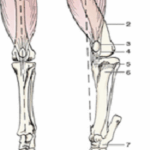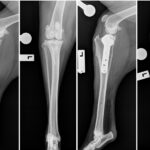 Noise and Storm Phobias:
Noise and Storm Phobias:
This information is courtesy of The Mindful Pet, a Veterinary Behaviour Service which provides a house call service to the pets of the South West on a monthly basis.
Fears of loud noises is very common in our pets. Dogs may commonly become fearful and or develop a phobia of thunder-storms, fireworks, gun-shots and other loud noises.
Fear is an emotional and physical response to a threat. It can be normal in certain contexts for pets to experience fear, as it gives the pet the ability to prepare and respond to a threat. Essentially, fear is a survival mechanism.
A phobia is an intense, irrational and persistent fear of certain situations, activities, things or people. A phobia is a maladaptive response, in which the fear or panic response is out of proportion for the stimulus. The marked fear response the pet experiences is like that of a panic attack.
- Phobias are not training or obedience issues, they are a medical condition, whereby the danger centre of the brain (the amygdala) is over-active and there is dysregulation of the fear pathways.
- Many owners falsely think that their pet will “grow out of the problem” or that their pet will “just get used to it”. However, for almost all pets, left untreated, storm and noise phobias will become worse.
- Dogs with storm and noise phobias are at risk of developing separation anxiety, generalised anxiety disorder and or other anxiety-related conditions, which will require treatment.
- Early intervention is paramount. If you notice a young puppy showing mild stress signs associated with a noise it is important to intervene immediately. Remove them from the noise, comfort them and create a positive experience with toys and treats.
- Prevention is even better. The best way of preventing the onset of a noise phobia is to form a positive association. We can do this by coupling the noise with something the pet enjoys or a pleasurable experience. That way the pet learns to product something good is going to happen when the noise happens.
- Make sure your pet is wearing current identification tags on their collar, are microchipped (with your details current), and safe and secure (ideally inside!)
What are the signs:
- Physical signs: rapid heart-rate, shallow breathing or panting, sweaty paws, salivating, tense muscles, dilated pupils, urination & defecation – including diarrhoea, trembling or shaking, ears backwards
- Behavioural signs: becoming clingy, going off food, hiding, pacing, vocalising, trying to escape, destructive chewing, self-harming injuries and occasionally redirected aggression
Medical Treatment Overview:
- For moderate and severe storm and noise phobias, medications may be prescribed by a veterinarian to address the panic and anxiety, and may be essential to keep your pet safe.
- Determining the right dose (and at times medication) for your pet can take time. Your veterinarian may need to adjust and tailor your pet’s medical treatment depending on your pet’s response.
- These medications MUST BE GIVEN PRIOR to the storm event, before the onset of panic and distress.
- In severe cases, and or if there are other concurrent anxiety issues, medication may required daily and or be utilised in the long term to treat chemical imbalances in the brain.
- Pet owners of storm phobic should monitor the weather to help be prepared:
+ https://www.facebook.com/perthweatherlive/
IMMEDIATE Management Strategies and Support:
- Create a safe haven for your pet to try and minimise the impact of the storm/noise:
+ bring your pet indoors
+ try to block out the sounds with music (a beat can be helpful to block out thunder!)
+ close the blinds and turn the lights on
+ provide access to a hiding spot for your pet (blanket, crate, bed etc.)
+ provide high value treats, chews and or toys/games to try change your pet’s emotional state
- Do not ignore your pet: comforting your dog will not reward your pet’s fears, but will rather alleviate it.
- Never punish a dog behaving fearfully. Punishment is not helpful, it does not address the underlying anxiety and will likely worsen the phobia.
- Thunder-shirts are a body wrap that can also help to alleviate anxiety, by applying gentle and constant pressure (similar to swaddling an infant). These may help all types of anxiety, fear and over-excitement.
- Adaptil Collar / Diffusers can help alleviate anxiety through the use of dog appeasing pheromones. Adaptil is a synthetic copy of the natural comforting pheromone released by a mother dog to reassure her puppies. It has been scientifically proven to help puppies and dogs of all ages with a variety of stress related problems. For some pets this may be a useful adjunct to treatment and management.
- Mutt Muffs may help to block out some of the sounds associated with the noise phobias. Check out
http://www.safeandsoundpets.com/page/page/4851794.htm
LONG-TERM Management Strategies
- Behaviour modification can by tricky for storm phobias, this may be because it may be impossible to replicate all the sensory stimuli (low barometric pressure, rain, humidity levels, lightening, smelled etc.) of a “real storm” with a simple recording of the noise.
- Desensitisation is a structured process whereby the owner teaches the pet not to react emotionally (with fear and panic) to the stimulus (the storm). This is achieved by exposing the pet to the noise in a gradual and controlled manner which does not elicit the fearful behaviour.
- This behavioural modification technique is normally coupled with counterconditioning which is essentially changing your pet’s emotional response, feeling or attitude towards the stimulus, and teaching a new (positive) response or reaction. The pet is then able to perform a favourable behaviour such as lying quietly in bed or going to their crate.
- Both Desensitisation and Counterconditioning much be down carefully, in a slow and controlled manner. If these techniques are executed poorly, there is a risk that your pet may become further sensitised to the storm sounds and actually worsen the phobia.
- Teaching your pet to settle and relax on cue can be a really useful exercise and management tool to utilise in fear related problems. Relaxation is the opposite of stress and panic. Additionally, many pets may benefit from crate training. Fore more information check out the links below:
- https://vcahospitals.com/know-your-pet/dog-behavior-and-training-teaching-calm-settle-and-relaxationtraining
- https://vcahospitals.com/know-your-pet/how-to-crate-train-your-dog


